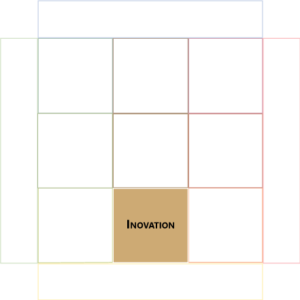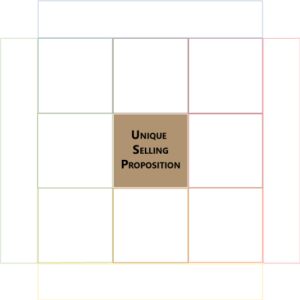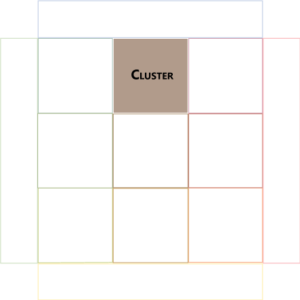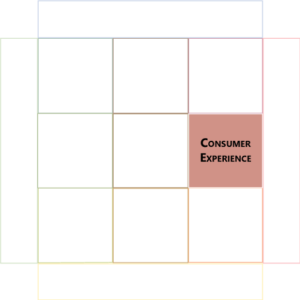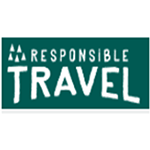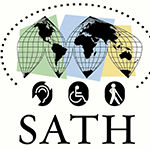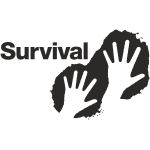
Creating a Unique Value Proposition (UVP) for Sustainable Tourism Enterprises

UNIQUE VALUE PROPOSITION (UVP)
10 Key Questions to Identify and Communicate Your Business's Unique Value Proposition and Stay Ahead with Creative Marketing Strategies
Key to Success
In this section, we would like to make sure that Small and Medium-sized Tourism Enterprises (SMTEs) should be aware of the following:
- Understanding how sustainable practices and responsible tourism behavior can differentiate a business from competitors and appeal to eco-conscious travelers.
- The role of traveler experience in delivering value to these businesses includes creating authentic and meaningful experiences for travelers that align with their values and expectations.
- The impact of sustainable tourism in the broader tourism industry includes contributing to destinations’ and communities’ economic, social, and environmental sustainability.
Accomplishments
In this step, we’ll:
- Identify why our travelers should choose our product or service over our competitors.
- Highlight travelers’ experience in delivering value to these businesses.
- Find our characteristics’ differentiation.
Time-Saving Tools
We’ll complete all sections of this chapter more quickly if we have any of the following handy:
- The tourism destination market plan and strategic plan.
- Tourism road maps offered by the tourism destination.
- Cluster’s marketing plan and strategic plan.
- Our business plan, our business objectives, and our strategic business plan.
- The trade travelers and other relevant stakeholders.
- Tourism road maps offered by the tourism destination.
- The public policies that deal with the cluster.
- List of cluster members
- Cluster event calendar.
- Benchmarking innovation initiatives in the tourism destination.
- Risk analyses about innovation initiatives.
- Competitors analysis.
- Traveler feedback analysis.
- Value mapping analysis.
- All documents could be applied to find relevant information.
DIFFERENCE BETWEEN THE UNIQUE VALUE PROPOSITION (UVP) TO UNIQUE SELLING PROPOSITION (USP)
A Unique Value Proposition (UVP) is a statement that describes the unique benefit or advantage that a business offers. It answers, “Why should they choose our business over our competitors?”
Conversely, a Unique Selling Proposition (USP) is a specific feature or benefit of a product or service that sets it apart from competitors and makes it unique. It answers, “What makes our product or service different and better than others?”
While both Unique Value Proposition and Unique Seling Proposition aim to differentiate a business, product, or service from its competitors, a UVP is a broader and more comprehensive statement focusing on the business’s overall value. At the same time, a USP is more specific and detailed and focuses on a unique feature or benefit offered by our service.
For example, a Unique Value Proposition for a restaurant might be, “We provide high-quality food and excellent service in a cozy atmosphere at an affordable price.” The USP for the same restaurant might be “We are the only restaurant in town that serves authentic Mediterranean cuisine.”
In summary, the Unique Value Proposition is a broader statement that encompasses the overall value of a business. At the same time, the USP is a specific feature or benefit that sets it apart from competitors.
Unique Value Proposition (UVP)
Presentation
A value proposition is a statement that explains what makes a business unique and how it solves a traveler’s problem or meets their needs better than other options.
Small and Medium-sized Tourism Enterprises (SMTEs) must understand their target travelers’ needs, preferences, and pain points to create a compelling, Unique Value Proposition (UVP). In addition, we need to identify what sets them apart from their competitors and how we can offer their travelers a unique and memorable experience.
Also, Small and Medium-sized Tourism Enterprises (SMTEs) must communicate their Unique Value Proposition (UVP) clearly and effectively to potential travelers through marketing and branding efforts. This can include highlighting their unique features, showcasing traveler testimonials, and creating engaging content that showcases their offerings.
By creating a solid, Unique Value Proposition (UVP) and effectively communicating it to travelers, Small and Medium-sized Tourism Enterprises (SMTEs) can differentiate themselves in a competitive market and attract more travelers to their business.
Small and Medium-sized Tourism Enterprises (SMTEs) can identify their Unique Value Proposition (UVP) by following the below effective methods or tools:
- Traveler analysis: SMTEs should analyze their travelers to understand their needs, preferences, and behavior. This analysis can help identify what the travelers value most and what we are willing to pay for. By understanding the traveler, SMTEs can create a UVP that will resonate with their target market.
- Competitor analysis: SMTEs should analyze their competitors to understand their strengths and weaknesses. This analysis can help identify gaps in the market and opportunities to differentiate. In addition, by understanding the competition, SMTEs can create a UVP that sets them apart from the competition.
- SWOT (Strengths, Weaknesses, Opportunities, and Threats) analysis: SMTEs analysis to identify their unique strengths and weaknesses and opportunities and threats in the market. This analysis can help identify areas where SMTEs can add value and differentiate themselves from the competition.
- Traveler feedback: SMTEs should gather traveler feedback to understand what we like and dislike about their business and products or services. This feedback can improve the UVP and make it more appealing to travelers.
- Value mapping: SMTEs can use value mapping to identify the different benefits we provide our travelers. This can help them identify their unique value proposition and communicate it effectively to their travelers.
Focus on what makes our business genuinely unique and ensure potential travelers understand its promise. Then, stand out from the competition by developing an attention-grabbing Unique Value Proposition (UVP) and staying ahead with creative marketing strategies.
GUIDING QUESTIONS
How can we promote responsible and sustainable practices throughout our UVP? Implementing eco-friendly initiatives and supporting local communities will contribute to small tourism enterprises' long-term success and reputation within our UVP.
YScala
A suggestion of guiding questions that are not intended to exhaust the topic:
- What are our value proposition and unfair advantage? This is important because we need to find ways to stand out from the crowd and differentiate our approach from all the other options available to our travelers.
- What solutions are we providing to each traveler segment that offers unique value?
- Why should they choose our business over our competitors?
- What do our travelers value most? And what are we willing to pay for?
- What do we do better than our competitors?
- What traveler interests are aligned with what we have to offer?
- What problem does our business solve?
- What type of value is our business selling to our travelers?
- Where is our value compared to the competitor’s value?
- What do our travelers think about the value we will give them?
By answering these questions, Small and Medium-sized Tourism Enterprises (SMTEs) can identify what makes a product or service unique and how it solves a traveler’s problem or meets their needs better than other options.
Offering more information
Besides the 10 guiding questions we’ve provided to help us evaluate and improve our Unique Value Proposition (UVP), we’ve compiled a list of valuable resources to further our knowledge and understanding of Unique Value Proposition (UVP). Notably, these resources offer insights into best practices, sustainability, marketing, and more, catering to the needs of tourism professionals and stakeholders. Consequently, by exploring these links, you’ll be better equipped to make informed decisions and create a thriving, competitive, and sustainable destination for travelers worldwide.
Tourism Tribe: This article discusses how tourism businesses can create a compelling Unique Selling Proposition (USP) to differentiate themselves from competitors. It offers tips on identifying unique features, understanding target customers, and crafting a clear, concise message.
Solimar International: This post discusses the importance of crafting a Unique Selling Proposition (USP) for tourist destinations. It offers insights into analyzing target markets, identifying key differentiators, and effectively promoting the destination’s USP to attract tourists and boost the local economy.
Rezdy: This article provides guidance on developing a Unique Value Proposition (UVP) for tour and activity businesses. It emphasizes the importance of understanding customer needs, showcasing unique experiences, and communicating the UVP effectively through marketing efforts.
As you conclude reading this orientation post, we’d like to invite you to explore the other insightful articles in our Business Tailor 4 Sustainable Tourism Develop Management Tool (BT4-STDM) blog. We invite you to engage with our community, share your perspectives, and contribute to this meaningful conversation by commenting below. Your experiences and ideas can help others in their sustainable tourism development management journey.
Let your like and recommend this post to improve your audience!
Share this post with friends, colleagues, or anyone else who might be interested.
Comments:
We invite you to engage with our community, share your perspectives, and contribute to this meaningful conversation by commenting below. Your experiences and ideas can help others in their sustainable tourism development management journey.


